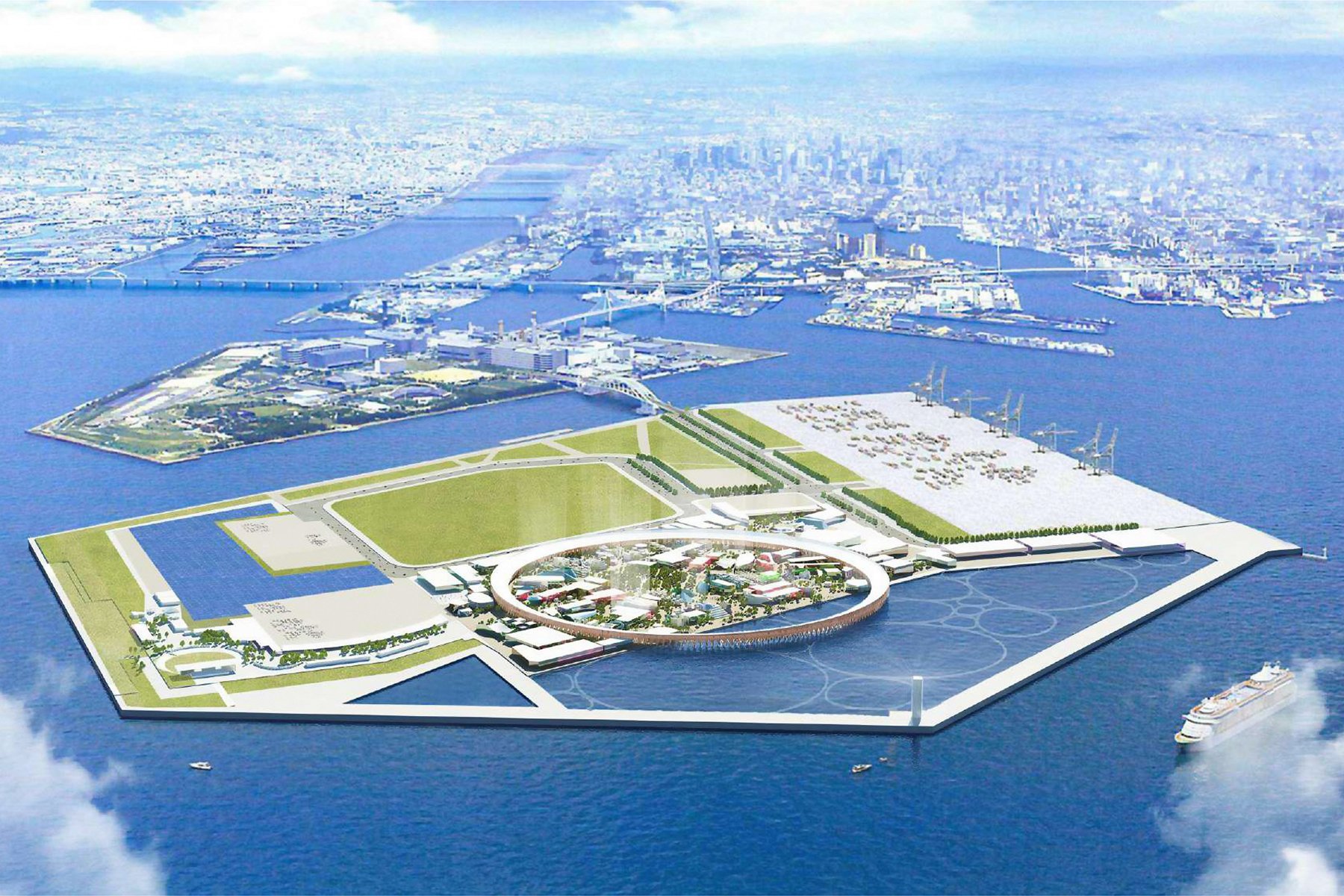Travel Guide: Kobe

Kobe is a vibrant port city with a cosmopolitan atmosphere.
Cover photo: Posing with Kobe Port Tower, Hyogo Prefecture, Japan (2024).
Click on an image for more details.
Intro
Nestled between the Rokko mountain range and Seto Inland Sea lies Kobe (神戸), one of Japan’s great harbors. Once ranked among the world’s busiest ports, Kobe is famous for its namesake beef, colorful Chinatown, and landmark Kobe Port Tower. It’s also a major producer of pearls and sake, rice wine.
Kobe — pronounced “koh-beh” — is the capital of Hyogo Prefecture, in the central Kansai Region. It’s part of Japan’s second-largest metropolitan area, Keihanshin, including Osaka and Kyoto. Home to some 1.5 million people, Kobe is the nation’s seventh-largest city.
While the port of Kobe has not recovered its global prominence since the Great Hanshin Earthquake of 1995 — international shipping is now dominated by China — Kobe has evolved into a beautiful city, making major improvements to its waterfront in the last decade. Japan’s first waterside stadium will open here in 2025; with a capacity of 10,000 people, Glion Arena will host a variety of sports events and concerts.
My day in Kobe was wonderful. I was so happy to finally try Kobe beef, wander around the historic foreign district of Kitano-Cho, and stroll through the waterfront. Compared to bustling Osaka and overcrowded Kyoto, Kobe offers a serene atmosphere — perfect for a relaxing trip.
History
Previously known as Owada-no-Tomari and Hyogo-no-Tsu, the port city of Kobe has flourished for over a millennium due to its central location on Honshu, Japan’s mainland. The imperial capital was briefly relocated to Kobe’s Fukuhara district from Heian-kyo (Kyoto) in the year 1180, but the move was ultimately unsuccessful.
At the end of the centuries-long isolationist Edo Period, Kobe reopened to international trade in 1868. Foreign districts were established, bringing new culture like jazz and cinema. By 1893, Kobe was the empire’s busiest port. By the 1970s, it was one of the busiest ports in the world.
Kobe was devastated by the Great Hanshin Earthquake in 1995, among the worst in Japan’s recent history. Following recovery, Kobe was designated a Creative City of Design by UNESCO, in recognition of its “enterprising spirit.” Today, Kobe is the third-largest and fourth-busiest port in Japan.
Waterfront
Kobe’s top attraction is the waterfront, a scenic tourist area which includes shopping, museums, and landmark Kobe Port Tower. Built in 1963, the drum-inspired icon reopened this year after major renovations. The tower now boasts an open-air viewing deck, gallery, and rotating cafe — admission starts at 1,000 yen per adult (approx. 7 USD). I recommend purchasing tickets in advance for sunset hours.
Meriken (American) Park is perfect for an evening stroll, colorfully lit by nightfall. There are several other attractions nearby, such as Atoa art aquarium at Kobe Port Museum. Featuring a variety of animals, the photogenic exhibits are fun for all ages — 2,600 yen per adult (17 USD).
Harborland is on the opposite end, with a large shopping mall and Ferris wheel. There are also 45-minute sightseeing cruises regularly departing from the bay — 1,600 yen per adult (10 USD).
Cuisine & Alcohol
Of course, Kobe is world-famous for its beef, beloved for beautiful marbling and soft texture. In fact, the late American basketball star Kobe Bryant was named after the delicacy. There are plenty of restaurants to choose from, such as historic Oi Nikuten — reservations recommended. Pro-tip: lunch meals are cheaper than dinner.
The cosmopolitan city offers a wide variety of Japanese and international cuisine; notably, Kobe is home to one of Japan’s largest Chinatowns (locally called Nankin-Machi) — best before evening.
Kobe’s Nada Ward (District) is also recognized as Japan’s largest production region for sake, rice wine. It accounts for as much as 30% of the nation’s supply. Alcohol enthusiasts can visit several breweries in the area, such as the Kiku-Masamune Sake Brewery Museum (founded in 1659) or Hakutsuru Sake Brewery Museum (1743).
Events
Kobe hosts several exciting events throughout the year: the most famous include Chinese New Year (January/February), Kobe Jazz Street (October), Kobe Port Fireworks (October), and light festival Kobe Luminarie (December) which is held in remembrance of the 1995 earthquake.
Transportation & Accommodation
It’s possible to enjoy Kobe as a day-trip from Osaka, about 40 minutes away by local train, but I recommend at least two days to fully enjoy the city. Hotels are spread throughout Kobe; I suggest staying near central Sannomiya Station, convenient for sight-seeing and nightlife.
Kobe is well served by metro, buses, and taxis. It can be accessed from Kansai International Airport (KIX) and local Kobe Airport; it’s three hours away from Tokyo by the Tokaido-Sanyo Shinkansen (Bullet Train).
Top Attractions
Kobe Port Tower & Waterfront (Meriken Park, Harborland)
Nunobiki Herb Garden & Ropeway
Kitano-Cho (Historic Foreign District)
Nankin-Machi (Chinatown)
Atoa (Art Aquarium)
Takenaka Carpentry Tools Museum (Woodworking)*
Nada Ward (Sake District)*
Mount Maya Observation Deck (“Ten Million Dollar Night View”)*
Kobe Maritime Museum*
Hyogo Prefectural Museum of Art (Designed by Tadao Ando)*
Nunobiki Falls (Waterfall & Hiking Area)*
Sorakuen (Japanese Garden)*
Gigantor Monument (Earthquake Recovery Anime Sculpture)*
Hyogo Big Buddha*
*I haven’t personally visited these attractions.
Additional Ideas
Nearby Arima Onsen is one of Japan’s most famous hot spring towns, especially popular in autumn. I recommend a visit to stunning Himeji-jo, one of the world’s largest castles.
Learn more about the city and upcoming events at official tourism website Feel Kobe. I’m looking forward to the December opening of La Suite Lupin Building, featuring a bakery and panoramic views of the port.























